

V- Offshore Iberian Peninsula(cont.)
Let's see a regional seismic line, located slightly northward of Flemisch Cap, where the transition between the sub-aerial and oceanic crust can be recognized, on the left part of the line, by the different morphology of the sedimentary substratum.
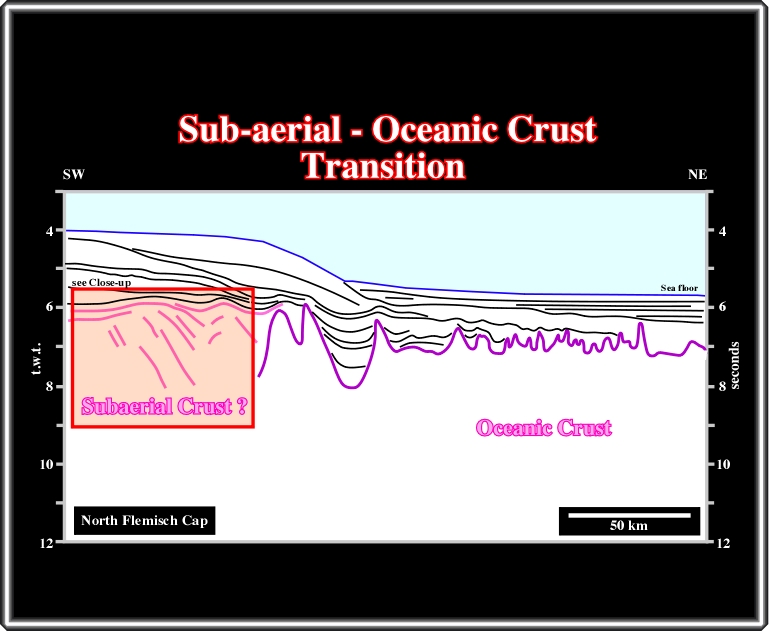
Actually, seaward, the oceanic crust is easily recognized by the mounded or hummocky morphology of the its upper boundary with small (take into account the scale) volcanic basins between volcanic ridges. SDRs can be recognized in western part and most likely they correspond to subaerial lava-flows. The geometry of these SDRs is better decipherable on the next close-up.
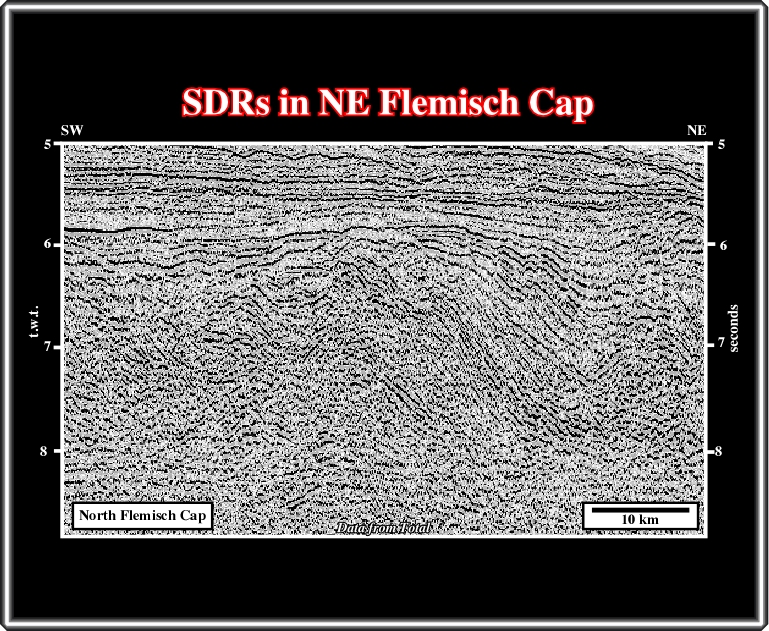
This close-up strongly suggests a stacking of successive lava-flows. They thin westerward, in direction of the craton and several disconformities can be individualized. Certain structures look like delta-lavas with a SW vergence. If these reflectors correspond really to sub-aerial lava flows, one can say that the rifting took place in a continental environment, that is to say the linked rift-type basins should be filled mainly by non-marine sediments.
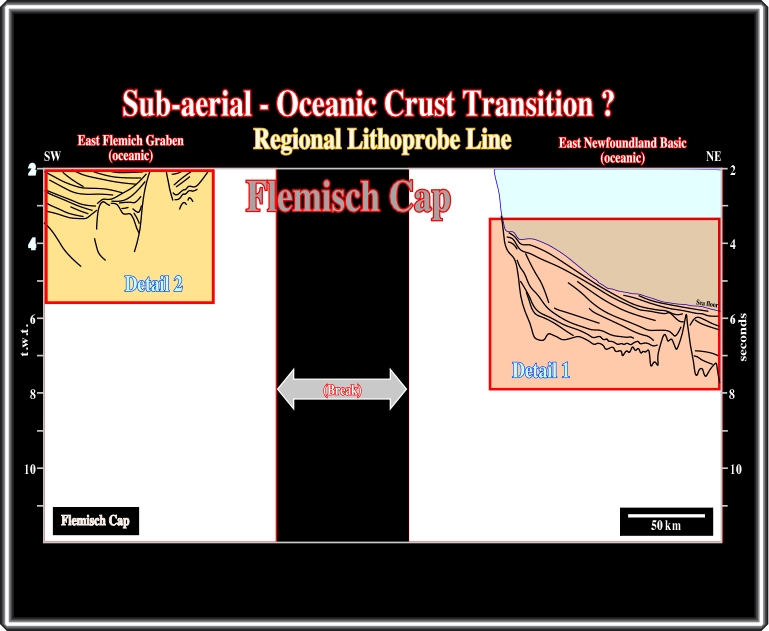
The seismic lines through Flemisch Cap are not too significant as illustrated on this line (Lithoprobe). Nevertheless, taking into account the next close-ups, it is possible to hypothesize a limit between the oceanic and sub-aerial crust eastward of the Flemisch Cap. In such highly falsifiable hypothesis the facies of the Flemisch Cap should be subaerial volcanism.
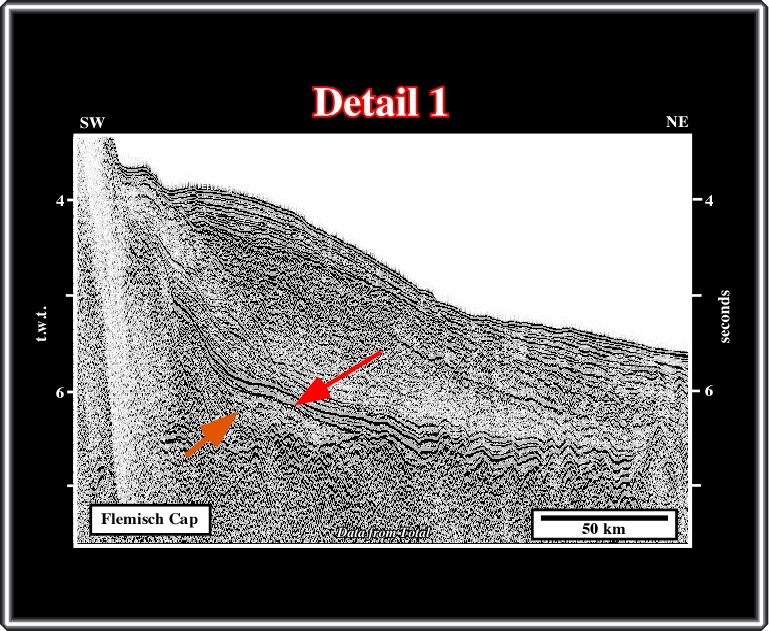
On this close-up, the oceanic crust is easily to recognized in central and right part by its hummocky morphology. However, on the left part, thinning landward interval (arrow), lava-flows connected seaward with a sheeted dyke, i.e., a spreading center, can be predicted. Subsequently, the reflectors below can also be interpreted as lava flows, that is to say, sub-aerial crust.
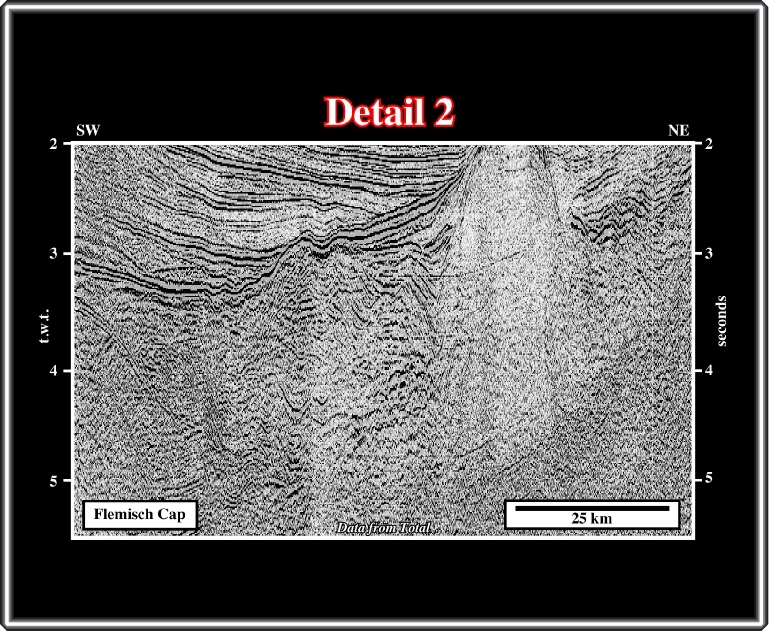
On this close-up, located westward of Flemisch Cap, besides the volcanic intrusion and related lava-flows, visible on the eastern side of the line, some reflectors can be interpreted as seaward dipping reflectors. If such interpretation is right, one can assume the break-up of the lithosphere took place in an sub-aerial continental environment as in the conventional Atlantic margins.
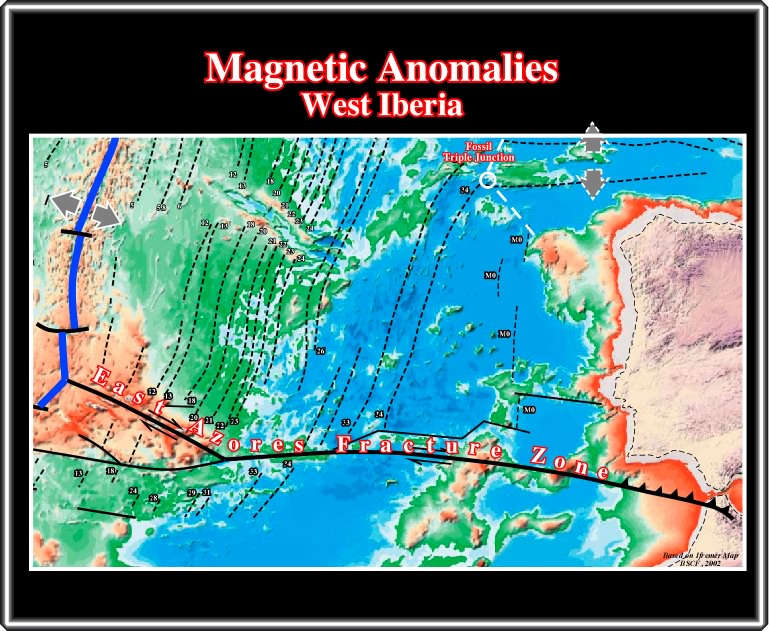
Returning to West offshore Iberia, one can recognized (i) a fossil triple junction, (ii) the Mid-Oceanic ridge, (iii) the East Azores fracture zone, (iv) the magnetic anomalies. In addition, an hypothetical continental oceanic boundary (COB), with apparent lateral displacements, controlled by old fracture zones more or less reactivated during sea-floor spreading, can also be identified, as we will see next.
to continue press
next
Send E-mail to carloscramez@gmail.com or to carlos.cramez@bluewin.ch with questions or comments about this conference. Copyright © 2006 CCramez Last modification: August, 2014